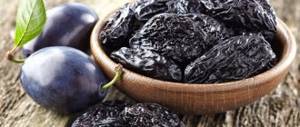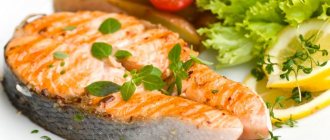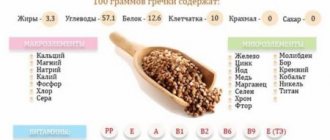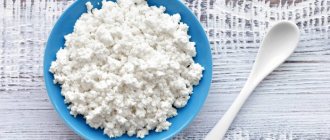02.12.2018
From the moment it enters the oral cavity, food goes through a complex path, giving some of the nutrients to the person, and the remainder of the processed mass enters the intestines and then out. If natural processes fail, diarrhea, vomiting, nausea, bloating and many other signs of gastritis appear.
Considering the above, it is not difficult to guess that during the progression of gastritis you need to follow a diet. Bread for gastritis is not always allowed in such diets and with a number of restrictions. If you really want a piece of bread, it’s better to cook it yourself. To do this, you need to find out from your doctor what kind of bread you can eat with gastritis specifically in your case, and then independently select the ingredients of the recipe, taking into account the doctor’s recommendations.
Bread for increased or decreased secretion of gastric juice
When the secretion of gastric juice increases, irritation of the gastric mucosa occurs, which leads to irreversible consequences - gastritis. In case of insufficient gastric secretion, the microflora of the gastrointestinal tract turns into a favorable environment for the proliferation of pathogenic bacteria.
In this regard, it is necessary to reconsider the patient’s diet.
First of all, you will have to limit the consumption of organic substances such as carbohydrates and gluten, especially during an exacerbation.
If there is insufficient secretion of juice by the stomach due to gastritis, bread cannot always be eaten. For gastritis with high acidity, it is contraindicated to eat Borodino bread and other types of products with a pronounced sour taste. The fact is that they enhance the process of acid secretion, thereby making gastritis worse due to the influence of irritating factors. Due to various additives, some types of bread are poorly digested by the inflamed organ, painful sensations appear in the stomach area and exacerbations may occur.
It is preferable for patients to make a choice among bread products in favor of crackers or crispbread and completely abandon other baked goods (especially during an exacerbation period).
Recommendations for choosing bread
When choosing a type of bread for gastritis, you must take into account the characteristics of the disease.
Dietary recommendations for people suffering from gastritis with high acidity are different and are not relevant for those who, on the contrary, have low stomach acidity.
Tips for excess stomach acid
In case of increased acidity, black bread is contraindicated. Its ingredients provoke excessive release of hydrochloric acid and, as a result, damage to the mucous membrane. This variety is difficult to digest and puts a strain on the digestive tract.
From the product appear:
- heartburn;
- reflux;
- colic;
- pain;
- complications.
Therefore, eating black bread for gastritis is not recommended.
In case of a mild form of the disease, it is permissible to dilute the diet with a small amount of black bread. You can’t eat it dry - it’s too aggressive for the mucous membrane, you can wash it down with any drink.
Bread for lack of gastric juice
For patients suffering from gastritis with reduced secretion of hydrochloric acid in the acute stage, doctors advise excluding baked goods from the menu. They contain a large amount of carbohydrates, and their dietary fiber injures the inflamed walls of the gastric tract.
Due to digestive disorders, stagnation occurs in the stomach, and the system cannot function normally. Only when the condition has stabilized can you eat a couple of pieces of grade II wheat bread. If the tendency to diarrhea persists, stale white bread and crackers made from it are indicated.
For this category of patients, products with bran are also prohibited. A weak stomach cannot cope with the digestion of coarse fiber, and bran irritates the mucous membrane even more, and the risk of developing peptic ulcers increases.
However, doctors and nutritionists say that bran is a very valuable product. During remission of gastritis, they cleanse the digestive tract, thus ridding the body of toxins and waste. Thanks to the large amount of dietary fiber, intestinal motility works well. The proteins and vitamins that make up bran are completely absorbed.
The effect of white bread on the body
Of the huge selection of breads and rolls, white bread has the most gentle effect on the gastric mucosa. For gastritis, it is advisable to consume such bread not fresh, but dried. Fresh baked goods activate the fermentation process due to the presence of yeast in it, thereby causing an increase in acidity. Moreover, when a person has stomach problems, the consequences may be more irreversible.
Nutritionists recommend buying second-grade bakery products - they are gray in color. But bread made from premium flour is strictly prohibited for people suffering from diabetes, as well as women, as it causes cardiovascular diseases.
Doctors recommend drinking bread with enough liquid. However, under no circumstances should you spread butter, mayonnaise or other sauce on bread.
Types of healthy bread
From all the variety on the shelves of the bread department, you can choose the truly right product that will not harm your sore stomach.
To do this, firstly, you need to adhere to the doctor’s recommendations, and secondly, do not forget about the basic properties of different types of product.
Product made from premium flour
Wheat flour of this type is not beneficial for the body, because it is refined - purified of all valuable nutrients. Products made from such flour are undesirable even for a healthy person. It is believed that the most useful are bakery products made from first and second grade flour.
For patients with gastritis of any form, the following are contraindicated:
- fresh bread;
- freshly prepared baked goods;
- sweet buns.
They contain yeast. When they enter the acidic environment of the stomach, they continue to ferment, causing indigestion and causing discomfort in the intestines. And as a result, bloating, dull pain, flatulence and poor health.
It is better to eat yesterday's baked goods in a dried form, as they are better absorbed, because the fermentation processes have already ended.
Proper bread
- White bread for gastritis is considered safe, but not rich or fresh, but yeast-free. This product is baked from first grade flour.
- Barley product is recommended for gastritis because it is easily digested by the stomach, does not cause stagnation and does not damage the mucous membrane.
- During remission of a chronic gastric disease, it is allowed to eat gray bread made from rye flour. The product improves the functioning of the digestive system and contains many nutrients.
- Rye bread for gastritis can be consumed, but no more than 2 pieces per day. In the acute stage, it is prohibited to eat it.
Crackers
Fresh bread has a high acid content, while bread crumbs contain practically no acids. Gastroenterologists recommend crackers even for gastritis with high acidity.
The best option would be if they are prepared at home. These crackers contain only healthy ingredients, and harmful impurities and additives are excluded.
Bread
Bread for gastritis is an ideal replacement for flour products. They are made without yeast, from low-grade flour, which significantly increases their dietary significance. The products are quickly absorbed without causing heaviness in the stomach, but on the contrary, they protect the mucous membrane from damage. They can be rye or wheat, corn or rice.
The product is rich in vitamins and microelements and serves as a source of fiber, which has a beneficial effect on the patient’s well-being. If consumed in moderation, there will be no harm.
Crispbread can be eaten if you have a stomach ulcer, only by first soaking it in liquid food: soup, milk, tea or compote.
To help the body fight gastritis, you must adhere to specific nutritional rules. A proper diet is an important component of a speedy and successful recovery. There is no need to completely give up bread, you just need to know what type and in what cases it is permissible to consume without harm to the body.
Restrictions on the intake of black bread
Fans of black bread should definitely first check with their doctor whether it is possible to eat rye bread if they have gastritis in a particular case. There are some rules that must be followed in order not to harm your health. If you stick to them, you don’t have to completely give up the brown bread beloved by many.
In mild cases of gastritis, this bread is allowed in small quantities, but during a full meal with sufficient water. Otherwise, aggravation cannot be avoided.
Due to the provocation of colic, this product is introduced into the diet with caution and only if there is a strong desire or is not possible to replace it with another bread product.
Rye bread
What kind of bread can you eat if you have gastritis? This question is asked by almost everyone who suffers from this disease. It is worth considering that there are several types of rye bread. Manufacturers often add various additives to the dough to improve the taste of the finished product. In any case, such food is difficult to digest. After all, rye bread consists of fibers that can irritate the mucous membranes.
It can be used for gastritis, provided that the disease is mild and the patient does not experience any discomfort. Bread with bran should be eaten with caution. But do not forget about the benefits of such a product. After all, it not only has a rich taste, but also contains useful microelements and vitamins necessary for the human body.
Flour products with bran
Unfortunately, many manufacturers add a considerable amount of additives that increase the shelf life of the product and improve the taste characteristics. Therefore, it is difficult for a healthy body to cope with such a load, and even more so for a patient with gastritis.
At the same time, the bran product contains a significant amount of nutrients that are necessary to normalize the functions of the digestive system and metabolism in general. Bran plays the role of a “broom”: it effectively cleanses toxic substances and waste from the surface of the gastrointestinal tract; has a beneficial effect on the smooth muscles of the intestinal wall (food is better digested); proteins and vitamins are well absorbed by the body.
That is why it is useful for people with this disease to eat such a product. When purchasing, you need to pay attention to the composition of the product to ensure there are no harmful additives, and trust only trusted companies.
Like any product, there should be moderation in everything. Therefore, you can eat bread with bran for gastritis, but the amount will have to be limited to small portions due to the fact that the coarse fiber contained in it is quite difficult for the stomach to digest.
If a person has exacerbations of diseases of the gastrointestinal tract with low acidity, such bread can negatively affect a weak stomach. It is recommended to eat baked goods with enough water, this is especially important for people suffering from gastritis.
What kind of bread is allowed?
When listing what kind of bread is allowed to eat for gastritis, bread should be mentioned first. This product appeared on store shelves relatively recently and has already gained well-deserved popularity. Bread for gastritis is not only allowed, but also very desirable. They are low-fat, low-calorie, low-acid, yeast-free, and rich in vitamins, minerals and fiber. A number of such benefits have a beneficial effect and stimulate the functioning of the stomach.
Some gastroenterologists advise replacing any bread with bread on an ongoing basis. But there are also a number of important rules when using them:
- look carefully at the composition (the presence of dried apricots, raisins, bran is contraindicated);
- buy extruded ones (with healthy cereals, ideally from barley);
- do not eat them warm or hot;
- eat no more than 100 g per day.
Another popular question: “Is it possible to eat crackers if you have been diagnosed with gastritis?” It is possible and necessary, and it is advisable not to buy them in the store, but to make them yourself: dry white bread in the oven or microwave (without oil and spices).
For reference! Crackers can be made from almost any type of bread (except black “Borodinsky”), so you won’t have to give up your favorite white loaf. Dry bread must be washed down with tea or water so that solid particles do not destroy the mucous membrane of a weakened stomach.
When eating bread and crackers, it is worth remembering that in everything you need to observe moderation. Watch your diet and get rid of annoying ailments. Do not give in to weaknesses in the form of buns, rolls or fresh bread. Take care of your health!
Brief table to summarize
Author of the article: Olga Fedorova
The benefits of bread made from wheat and rye flour
A peculiar gray color indicates the presence of wheat and rye flour in the flour product. This bread has a positive effect on human health due to the slow, gentle digestion of the product. The beneficial substances contained in it enter the body in the required quantities. Scientists have proven that gray bread serves as an antidepressant and increases tone, which is necessary in the cold season.
If there are no exacerbations (pain, colic, heaviness in the stomach, and so on), then it is allowed to eat yesterday’s product at the same time as other foods, not forgetting to drink the required amount of liquid - soup, compote or weak tea.
What is bread, benefits and harms
Bread is one of the main products on the table of most people on earth . But today, flour products are prepared using a completely different technology, which in turn completely changes its structure.
This is due to the fact that all useful substances and microorganisms are found in the grain shell and in its germ, but according to new grain processing standards, all these parts are taken away and end up in waste.
As a result, only 30% of the healthy remains, and the rest is starch and calories, which are part of the first grade flour.
One of the unfortunate aspects of this is that these 30% of nutrients are quickly eliminated from the body, leaving all the calories to accumulate.
The consequences of taking a large amount of flour in the diet contributes to the accumulation of excess fat.
On our website: What wine can you drink if you have gastritis?
Homemade bread recipe
Supermarket shelves always offer a huge selection of baked goods for sale. At the same time, if the financial situation in the family allows, it is better to purchase the necessary household appliances and make such a product at home. At the same time, be sure to adhere to an important condition - do not eat fresh and hot bread for people with an acute form of stomach disease, and also try not to put high-grade flour in the recipe for future products.
When baking bread for a patient with gastritis, it is strictly not recommended to add muesli, since this product contains coarse fibers that can increase the activity of hydrochloric acid.
Making brown bread
It will require the following products: water - 570 ml, fresh yeast - about 20 grams, grade 2 flour - 730 grams and salt - 2 teaspoons.
Pour warm water into the sifted flour, and then add fresh yeast, mix well and put in a warm place for an hour and a half. During this time, our dough will rise several times.
Now mix it with the rest of the ingredients until smooth and knead for a long time. It's a labor-intensive process, but it's worth it. We should have a soft, non-sticky and elastic dough.
All we have to do is give the desired appearance to the future bread and place it in a non-stick container for preparing bread. We turn on the bread maker for an hour and wait for our baked goods to cook. Do not forget about the doctor’s recommendations about the undesirable consumption of hot bread.
Preparing breadcrumbs
Crackers are divided into regular ones, which are made from different types of bread, and rich ones. On the shelves of many stores, crackers for every taste and color are sold. Moreover, they all contain flavor enhancers and a large number of spices, which have a negative impact on health. At the same time, for people with various diseases of the gastrointestinal tract, store-bought crackers can cause exacerbations.
That is why such a product should not be allowed into the diet of patients. At the same time, preparing them at home is quite easy and simple. Using your imagination, you can bake absolute croutons from any old bread. At the same time, it is necessary to take into account the well-being of the person who will eat them.
Choosing baked goods
Patients with gastritis with high or low acidity are strictly prohibited from eating fresh white bread, fresh pies, buns and other products made from dough with wheat flour. For the manufacture of such products, yeast is used, which can provoke a deterioration in the patient’s condition, causing indigestion. It is worth considering that baked goods with such a component, once in the stomach, are not digested, but continue to ferment. As a result, the patient may experience pain, bloating, and poor health. This only complicates the progression of gastritis.
An alternative to fresh baked goods made from yeast dough are croutons and crispbread. Such food in small quantities will not cause harm. You can purchase ready-made products or prepare them yourself. It is not recommended to use sauces, spices and oil.
What fruits (bananas, apples, grapes, melons and watermelons) are good for gastritis?
In case of acute gastritis or exacerbation of chronic gastritis of any kind, the consumption of any low-alcohol and alcoholic drinks - beer, cognac, vodka, wine, etc.
Even during periods of remission, drinking alcohol in a person with gastritis causes chemical damage to the already unhealthy gastric mucosa.
Alcohol provokes the production of gastric juice, namely hydrochloric acid, which damages the mucous membrane, which aggravates the inflammatory process in the stomach.
Undesirable types of bread
The course of the disease brings significant restrictions on food. Some types of bakery products are allowed only in a subacute state. In the chronic form, some varieties are able to gradually replenish the diet. Patients with any form of gastritis should not eat fresh bread or hot flour products.
Black bread is contraindicated for gastritis. It contains components that give it a sour taste. It has the following negative effects on the gastrointestinal tract:
- provokes the release of hydrochloric acid;
- takes a long time to digest, rots if acidity is low;
- creates additional stress on a sore stomach (fermentation, gas formation).
Only those with normal acidity in a subacute state are allowed to eat black bread. The dosage should be minimal. Other types and forms of the disease require you to stop using the black variety.
Rye bread for gastritis is prohibited during an exacerbation of the disease. It is difficult to digest and causes stagnation in the stomach. It is baked from rye flour, which contains a lot of useful properties and vitamins. Therefore, the remission period allows one or two servings.
The complete ban applies to types of hot, fresh baked goods, and dry food. Eating bread is accompanied by drinking liquid for better digestion. You should avoid eating foods without flavoring additives, which can cause pain and heartburn.
Products with bran
The leader among baked goods in fiber content thanks to the bran itself. They remove waste and toxins from the gastrointestinal tract. The beneficial substances of its composition are easily absorbed by the body. Such products have high nutritional value.
Bread with bran is undesirable for gastritis due to solid particles that can harm the gastric mucosa. Coarse fiber is difficult for the diseased organ to digest. Therefore, patients with low acidity should not add it to their diet. Neglecting the prohibition will lead to the development of ulcers.
Gastritis has affected more than half of the world's population, becoming one of the most common diseases. To successfully combat it, you must undergo a course of treatment, including a strict diet. Flour products can supplement the patient’s diet. However, it is recommended to take into account the variety, degree of freshness and composition of the bakery product.
Gastritis is a fairly serious pathology that affects the gastrointestinal tract. In treatment, it is important to follow an integrated approach: take medications and follow a special diet. This is especially true for those products that we eat every day, for example, bread. What kind of bread is good for gastritis? Black with a slight sour taste, fluffy white or diet bran? Fresh or stale? We answer your most pressing questions.
Types of bread
The influence of bread on the activity of the gastrointestinal tract is determined by its composition and depends on the variety, method of preparation, as well as the grain crops used for its production:
- Factory or home. In the first case, special equipment and a strict recipe are used, in the second, culinary improvisations are possible during the preparation of the dough and baking in the oven or bread maker.
- Traditional (made from finely ground rye or wheat flour) or dietary (with the addition of buckwheat, barley, oats, bran).
- White or black. For the first, various varieties of ground wheat are used, for the second - rye.
- Yeast and yeast-free.
In addition, bakery products are produced in the form of: Each type has a different effect on the gastric mucosa and its motility, so doctors advise not to consume certain ones, and some are recommended for dietary nutrition.
Black
Any black bread is healthy, it contains microelements, a large amount of fiber, vitamins, and valuable amino acids. However, a pure product made from rye flour has high acidity, up to 12%. The fiber contained in black bread is needed by the intestines, and is not at all useful to a sick stomach due to its traumatic effect.
Conclusion: rye products are not recommended for high and normal acidity. In normal conditions, they are allowed in the stage of stable remission in small quantities - 30 grams 2 - 3 times a week in dried form.
If black bread is an original Russian product, then history attributes white bread to the Egyptians. It was they who first grew wheat and baked the well-known loaf, which is present in every home today. How can they not scold him because of his high carbohydrate content! But they forget about the nutritional value. Although white bread contains everything – vitamins, amino acids, and microelements.
Do you feel how the chances of wheat bread increasing to become mandatory in the diet of a patient with gastritis? So it is - wheat bread is allowed for gastritis. True, not warm, but yesterday’s, remember that.
Varieties without yeast
Is there bread without yeast? Happens. This is lavash and its varieties. All other varieties, if not prepared with the addition of yeast, are based on a leaven that “works” in the dough according to the same fermentation principle, no doubt. It is generally impossible to “raise” rye flour without yeast or leaven; with wheat flour the situation is a little simpler.
The nutritional value of sourdough products is close to yeast varieties, so it is not of fundamental importance. So the choice of product is a matter of your taste preferences. And we talked about the rules of nutrition for gastritis above.
Any grain bread contains the following ingredients:
- Whole or crushed cereal grains. This is not necessarily rye or wheat; barley, rice, corn and other grains are successfully used in recipes.
- Yeast. They can be classic, as well as dry and liquid.
- A mixture of water and milk.
- Salt.
An interesting fact is that a real grain product cannot be white and fluffy - if the recipe contains unrefined grains, the bread has a dense consistency and a grayish color. And on fluffy white buns, grains can only be present as a topping.
Crackers for gastritis
Crackers are recommended by gastroenterologists for gastritis. Fresh bread has a high acid content. But in breadcrumbs this figure is reduced to almost zero. For a weakened stomach, this is a salvation. Rusks are harder than fresh bread. It takes a person more time to chew them. This produces more saliva, which is beneficial for digestion.
Both bread and crackers are the best choice for patients with gastritis. However, they can also cause harm. Due to their dense texture, they can injure the mucous membrane of the stomach or mouth. To avoid this, it is recommended to combine crackers and bread with liquid food and drinks. They can be soaked in milk. Then these products are easier to chew and digest, but they do not lose their beneficial properties at all.
It is important to understand that you should be especially careful when buying bread and crackers with additives. The manufacturer often does not skimp on salt and spices; there are even products with nuts, seeds, and bran. Such products must be approved by your doctor. Only he will determine in what form the disease occurs, what are the acidity levels? Based on these data, the doctor will recommend the best types of flour products.
Gastritis has worsened. Should you eat bread?
When the patient is faced with an exacerbation of the disease, the first days he is shown a starvation diet. After 2 days, liquid porridges, jelly, and broths are gradually introduced into the diet. After a week, you can eat other foods. The diet should be as gentle as possible so that the mucous membrane does not become inflamed.
Of course, many people love still warm, freshly baked bread. Why do you think you can’t eat fresh bread if you have gastritis? The explanation is simple - it provokes bloating and damages the mucous membrane. By the way, pies and cookies are excluded for the same reason.
I wonder if it is possible to eat bread if you have gastritis of the stomach, when the disease is in a chronic rather than acute stage? It all depends on the secretion of the stomach. It can be high, low, normal. Below we will discuss the features of using baked goods for each of the listed forms.
Eating bread for acute gastritis
When an acute process develops, the first days are fasting, after two days they eat exclusively liquid food in the form of jelly, porridge and broth. After a week, foods are selectively added to the diet. During this period, you need to be careful with your stomach and not eat foods that inflame the mucous membrane.
You should not consume fresh bread, which develops bloating and damage to the mucous membrane, increasing the secretion of gastric acid. For a similar reason, rich foods are excluded: pies, buns, cookies.










